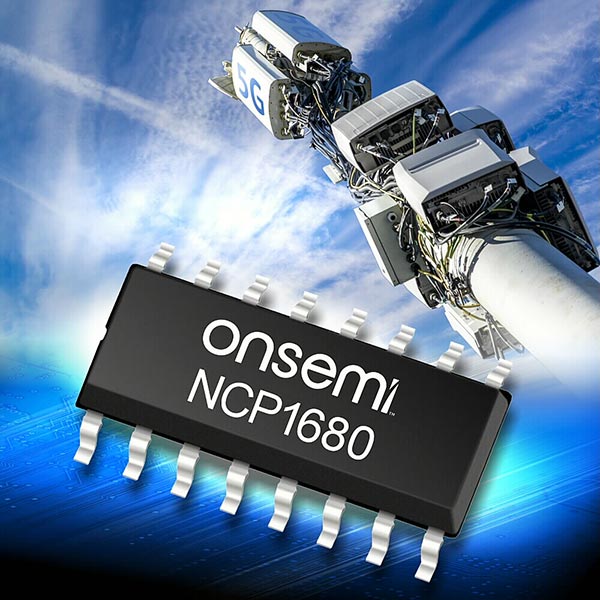 onsemi (Nasdaq: ON), a leader in intelligent power and sensing technologies, is pleased to announce that the market-leading NCP1680 critical conduction mode (CrM) bridgeless totem pole power factor correction (PFC) controller has been awarded a PowerBest award by Electronic Design. These awards include a very limited number of electronic power products that help engineers create winning designs and celebrate the people who helped make them possible, despite (another) incredibly challenging year in 2021.
onsemi (Nasdaq: ON), a leader in intelligent power and sensing technologies, is pleased to announce that the market-leading NCP1680 critical conduction mode (CrM) bridgeless totem pole power factor correction (PFC) controller has been awarded a PowerBest award by Electronic Design. These awards include a very limited number of electronic power products that help engineers create winning designs and celebrate the people who helped make them possible, despite (another) incredibly challenging year in 2021.
The NCP1680 from onsemi received the award because its unique implementation of bridgeless totem pole PFC using a mixed-signal controller gives designers an excellent tool to improve efficiency and reduce the cost and design complexity of high performance power supplies. The controller is ideally suited for use in ultra-high-density offline power supplies that operate with universal mains (90-265 Vac) at power levels of up to 350 W.
The bridgeless totem pole PFC topology eliminates the diode bridge present at the input of a conventional PFC circuit that account for around 4 W of losses in conventional PFC circuits used in a 240-W power supply (i.e., roughly 20% of total losses), significantly improving power-stage efficiency. The NCP1680 provides control signals for a fast-switching leg driven at the pulse-width-modulation (PWM) switching frequency and a second leg that operates at the ac-line frequency. The controller can be used with nearly any switching device, from conventional super junction silicon MOSFETs to Wide Bandgap devices based on silicon carbide (SiC) or gallium nitride (GaN) transistors.
The NCP1680 simplifies the design of bridgeless totem pole PFC by employing a novel current-limiting architecture and line phase-detection mechanism. Its control loop supports a constant-on-time CrM architecture with valley switching. To meet today’s global efficiency standards for light-load operation, it operates in discontinuous conduction mode (DCM) with valley-synchronized turn-on during frequency fold back operation.
Just a few simple components are required externally to realize a fully-featured totem pole PFC, thereby saving space and component cost. Further reducing component count, the cycle-by-cycle current limit is realized without the need for a Hall Effect sensor.
Housed in a SOIC-16 package, the NCP1680 is also available as part of an evaluation platform that allows rapid development and debugging of advanced totem pole PFC designs.


